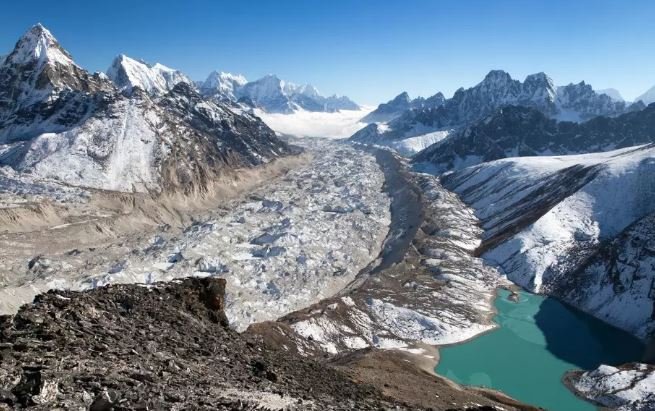The Himalayan cryosphere, often described as the planet’s most sensitive climate indicator, is undergoing a quiet yet profound transformation. The latest assessment by the Central Water Commission (CWC) paints a detailed picture of this change, revealing a 27.87 percent increase in the water spread area of India’s glacial lakes between 2011 and 2025. While the numbers themselves may seem clinical, they tell a deeply human story, one of a warming planet, shifting hydrological systems, and the growing need for scientific foresight and cooperative adaptation.
The CWC’s Monthly Monitoring Report of Glacial Lakes and Water Bodies in the Himalayan Region draws on extensive satellite data from Sentinel-1 and Sentinel-2 imagery, processed through the Google Earth Engine platform. Of the 100 glacial lakes monitored across India’s Himalayan states, 58 recorded an increase in surface area, with total coverage rising from 1,952 hectares in 2011 to 2,496 hectares in 2025. This expansion is not uniform but widespread, spanning Ladakh, Jammu and Kashmir, Himachal Pradesh, Uttarakhand, Sikkim, and Arunachal Pradesh. Even small percentage changes at high altitudes correspond to vast volumes of meltwater accumulation, offering both scientific insight and cause for concern. The Himalayan glaciers feed some of Asia’s greatest rivers, the Indus, Ganga, and Brahmaputra, sustaining agriculture, hydropower, and livelihoods for millions. The observed expansion of glacial lakes signals accelerated glacier melt, driven largely by temperature rise and changing precipitation patterns. It is part of a larger regional shift in the cryosphere, where ice loss is reshaping landscapes and altering the timing and availability of freshwater downstream. While glacial lakes are natural features of dynamic mountain systems, their rapid growth highlights the complex balance between natural processes and climate pressures. Importantly, these findings must not be seen purely through a lens of alarm but as an opportunity for deeper understanding. Glacial lakes serve as natural observatories of climate behavior, helping researchers refine models of hydrological change and develop better predictive systems for glacial lake outburst floods (GLOFs). The CWC’s approach, integrating high-resolution satellite imagery, geospatial analysis, and continuous monitoring, marks a significant advancement in India’s capacity for climate-informed water management. This scientific infrastructure can now support early warning systems, guide infrastructure design, and improve long-term resilience planning in vulnerable Himalayan regions. From a broader perspective, the expansion of glacial lakes reflects the interconnectedness of the global climate system. Rising temperatures in the Himalayas mirror trends across the world’s high mountain regions, from the Andes to the Alps. These changes remind us that mountain ecosystems are both fragile and vital — they regulate water cycles, store carbon, and influence regional weather systems. Protecting them requires a sustained commitment to monitoring, research, and adaptive governance that respects both ecological and community dimensions. The policy implications are equally clear. There is an urgent need for integrated Himalayan water management that bridges scientific data with local knowledge. Community-based monitoring, combined with real-time data from national agencies, can improve preparedness and reduce risks from potential lake outbursts. Moreover, regional cooperation among countries sharing the Himalayan basins is essential for effective disaster response and transboundary water governance.
As the CWC’s findings show, the transformation of the Himalayan cryosphere is not a distant or abstract phenomenon. It is happening here and now, reshaping rivers, influencing weather patterns, and redefining the rhythm of life for mountain communities. The 27 percent increase in glacial lake area over just 14 years is both a warning and a guidepost urging us to act with wisdom, precision, and humility. The Himalayas, long revered as a source of purity and balance, continue to remind us that climate change is as much a question of coexistence as it is of science. The challenge before us is to listen carefully to what these silent mountains are telling us and to respond with clarity, cooperation, and care.




